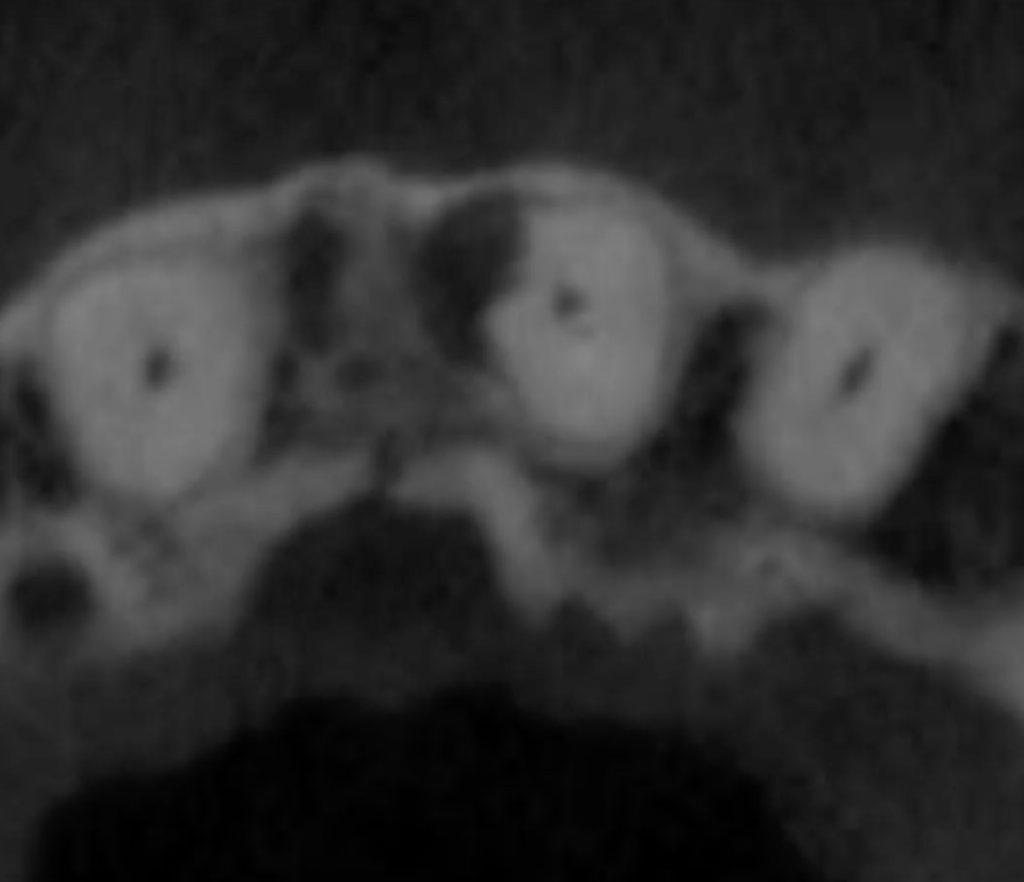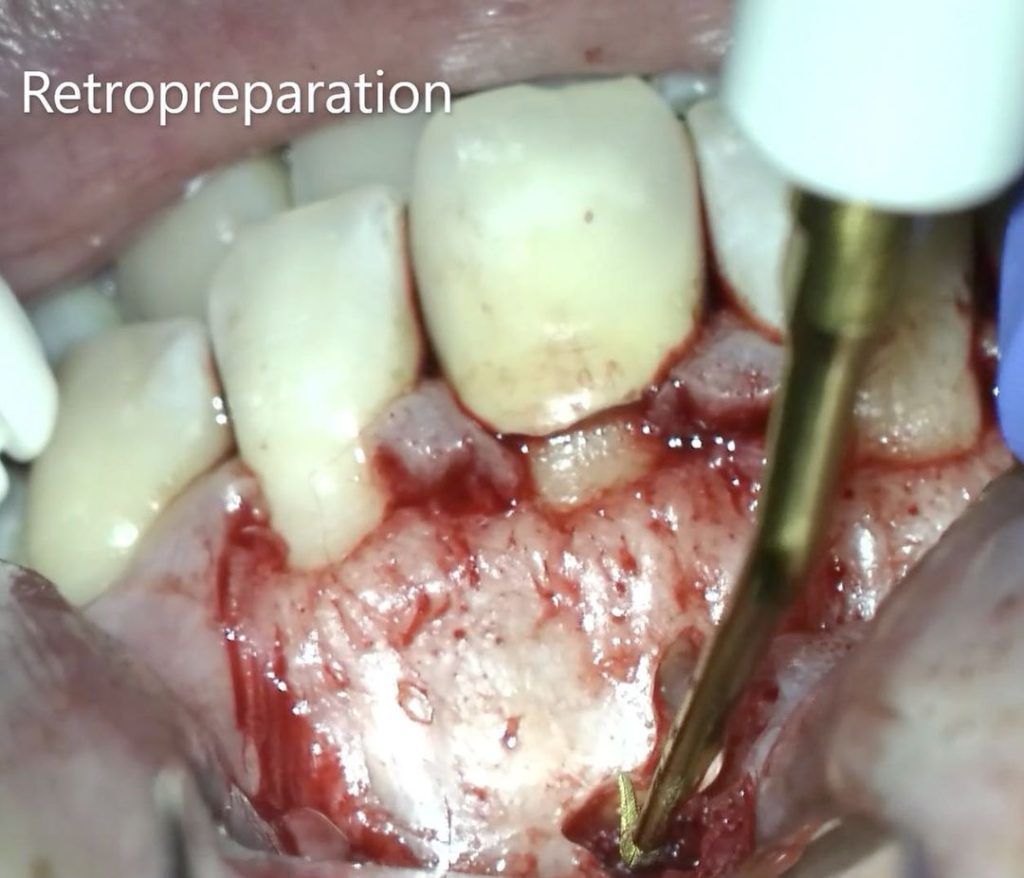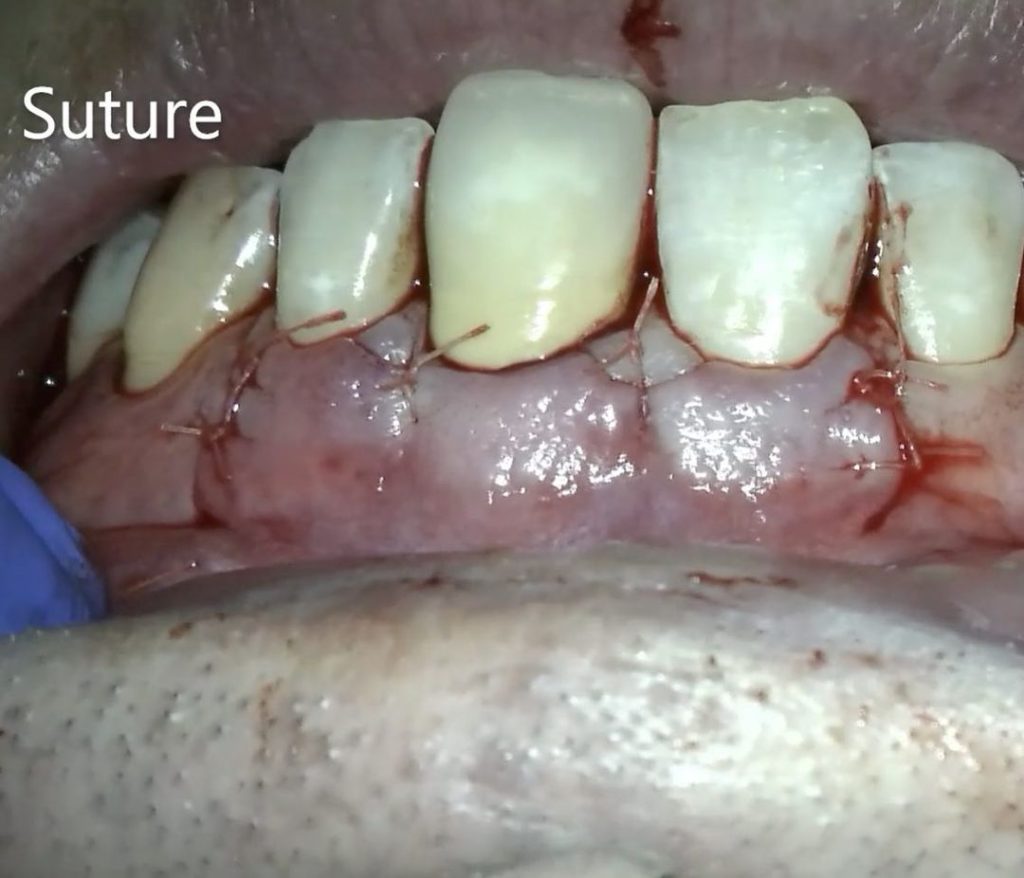Bioactive bioceramics are materials that react with the tissue components. The “bioactivity” of the materials refers to its ability to create a hydroxyapatite layer when in contact with tissue fluid rich in calcium and phosphate. This property allows the material to be highly biocompatible, osteoinductive, osteoconductive, and contributes to its sealing ability. These materials also have a hydrophilic nature, which makes them an excellent material for root canal systems.
Bioceramics are a great indication for perforation repairs and external resorptions. In the past amalgam, glass ionomer, super EBA and MTA were materials of choice for these situations. But all the above materials have significant handling challenges – ranging from lack of sealing ability to long setting times.
Below is a case presented by Dr. Yasuhiko Kamura – showing the surgical repair of #9 (2.1) with external inflammatory resorption.
Now, when performing perforation repairs or apical surgery, we have the option of using either a bioceramic filling material that comes premixed in a syringe, or a premixed bioceramic putty that comes in a jar. Either way, this is so much easier than mixing MTA or super EBA. The putty can be used for root repair material and for direct pulp caps.
Technique Details:
- After the placement of the bioceramic putty (over the exposure), place a hard substance over the unset bioceramic material, because (in the past) a direct pulp capped tooth has usually been restored in two visits. Glass ionomer cement (GIC) seems to be the best material for such a technique, prior to placing a permanent restoration, such as a bonded composite.
- It will be difficult to place a bonded restoration over the unset bioceramic material. Instead, place a thin layer of GIC over the pulp cap. The great news is that the ceramic particles in the GIC will bond to the ceramic particles in the bioceramic root repair material. Subsequently, the composite material can be bonded to the GIC. This technique can be completed in a single visit.
There are many forms of bioactive bioceramics. To get a more detailed view on each form and their evolution through time, here is a great resource: link!
Today’s Morning Huddle was made possible by Dr. Yasuhiko Kamura – @endodontist_kamura









